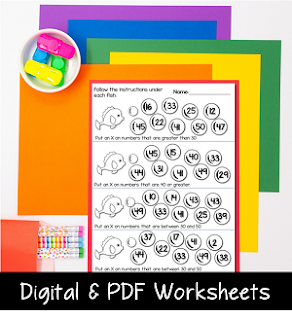We all have them! Those bags of plastic Easter eggs from the Dollar Store.
Well, the time has come to get them out and use them in your classroom. Today I am sharing 5 fun ways you can use these plastic eggs to practice math skills in your early primary classroom. Read on and get ready to have some fun!
Addition Eggs
Get a collection of plastic eggs and separate them. On the piece that is slightly smaller write the answer to your question. On the larger side write a number of addition centers that add up to the answer you have given. This helps your students to see multiple addition sentences for one answer. Place the egg halves in a basket or other container and students will match up the answer half with the question half.
What Number Comes Next?
On the larger side of the egg write two numbers in a sequence. On the smaller side write the number that comes next in the sequence. Students will match up parts to complete the number sequence. If you want to make the task more challenging write the matching sets on different coloured eggs so that students need to look at the numbers and not rely on the colours to match.
How much money in the egg?
Write a number on the outside of each egg so that students can complete the recording sheet. Inside of the egg place coins for students to count. Your students will open the egg and count the coins and record the amount beside the number on the recording sheet.
Graphing with Eggs
Number the eggs and then place a collection of objects in each egg. Some suggestions to fill the egg with are bingo chips of different colors, different mini erasers or jelly beans. Students open the egg and spill the contents out and then create a bar graph to show the contents of their egg.
Fact Family Eggs
Students will write addition and subtraction facts based on the contents of the egg. Place a number of counters in the egg (2 different colors). Students spill the contents of the egg and determine the addition and subtraction questions that can be created with the number of chips (or other small object). You can also number the eggs if you wish but it is not necessary because your student will record all the info on the sheet so it is easy for you to check.
All of these activities can be done without the need for a recording sheet. However, if you need to hold your students accountable you can find these sheets by clicking on the image below. All of these recording sheets are included, as well as 4 more recording sheets for literacy activities. I often place my recording sheets in a page protector and my students use a dry erase marker to complete. Upon completion they take a picture and file it in their digital portfolio. I love being able to check their work online and being able to minimize the paper in my classroom. Click here to check out the collection of recording sheets.
Check out my post on using plastic eggs to teach literacy skills by clicking the image below.
Until next time,

























.png)









No comments